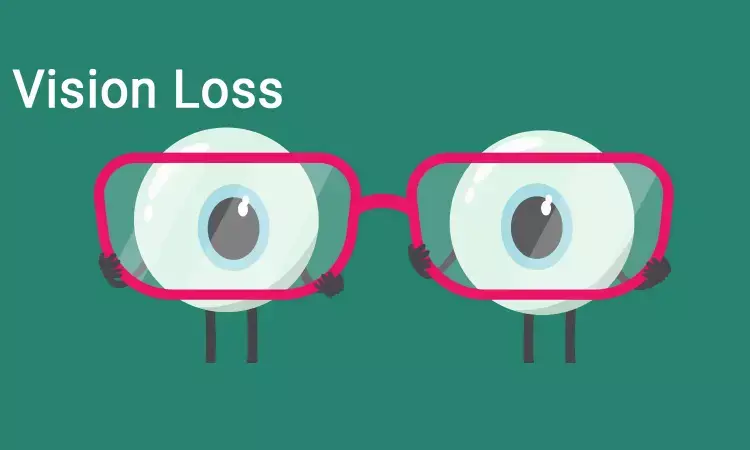- Home
- Medical news & Guidelines
- Anesthesiology
- Cardiology and CTVS
- Critical Care
- Dentistry
- Dermatology
- Diabetes and Endocrinology
- ENT
- Gastroenterology
- Medicine
- Nephrology
- Neurology
- Obstretics-Gynaecology
- Oncology
- Ophthalmology
- Orthopaedics
- Pediatrics-Neonatology
- Psychiatry
- Pulmonology
- Radiology
- Surgery
- Urology
- Laboratory Medicine
- Diet
- Nursing
- Paramedical
- Physiotherapy
- Health news
- Fact Check
- Bone Health Fact Check
- Brain Health Fact Check
- Cancer Related Fact Check
- Child Care Fact Check
- Dental and oral health fact check
- Diabetes and metabolic health fact check
- Diet and Nutrition Fact Check
- Eye and ENT Care Fact Check
- Fitness fact check
- Gut health fact check
- Heart health fact check
- Kidney health fact check
- Medical education fact check
- Men's health fact check
- Respiratory fact check
- Skin and hair care fact check
- Vaccine and Immunization fact check
- Women's health fact check
- AYUSH
- State News
- Andaman and Nicobar Islands
- Andhra Pradesh
- Arunachal Pradesh
- Assam
- Bihar
- Chandigarh
- Chattisgarh
- Dadra and Nagar Haveli
- Daman and Diu
- Delhi
- Goa
- Gujarat
- Haryana
- Himachal Pradesh
- Jammu & Kashmir
- Jharkhand
- Karnataka
- Kerala
- Ladakh
- Lakshadweep
- Madhya Pradesh
- Maharashtra
- Manipur
- Meghalaya
- Mizoram
- Nagaland
- Odisha
- Puducherry
- Punjab
- Rajasthan
- Sikkim
- Tamil Nadu
- Telangana
- Tripura
- Uttar Pradesh
- Uttrakhand
- West Bengal
- Medical Education
- Industry
Adults at increasing risk for vision loss, finds JAMA study

Although more adults used eye care, a larger proportion reported unaffordable to purchase eyeglasses.
US: Loss of vision can occur suddenly or develop gradually over time. Vision loss may be complete (involving both eyes) or partial, involving only one eye or even certain parts of the visual field. Vision loss is different from blindness which is present since birth.
The number of adults at risk for vision loss has increased over the past 15 years, yet at the same time eyeglasses have become less affordable, says a study published in the journal JAMA Ophthalmology.
This study was done by Sharon H. Saydah, Ph.D., from the National Center for Chronic Disease Prevention and Health Promotion, Centers for Disease Control and Prevention, Hyattsville, Maryland, and colleagues. They used data from the 2002 and 2017 National Health Interview Survey. In 2017, more than 93 million US adults were at high risk for vision loss (an increase compared with 2002); however, only 56.9% visited an eye care professional annually, and only 59.8% received a dilated eye examination. Among adults who reported needing eyeglasses, approximately 9 in 100 said they could not afford them, up slightly from 2002.
Analysis excluded respondents younger than 18 years and those who were blind or unable to see. Covariates included age, sex, race/ethnicity, marital status, educational level, income-to-poverty ratio, health insurance status, diabetes diagnosis, vision or eye problems, and US region of residence.
Following were the key findings:
1)Among 30 920 individuals in 2002, 16.0% were 65 years or older, and 52.0% were female; among 32 886 individuals in 2017, 20.0% were 65 years or older, and 51.8% were female.
2)In 2017, more than 93 million US adults were at high risk for vision loss compared with almost 65 million in 2002, a difference of 6.4 percentage points.
3)The use of eye care services improved 56.9% reported visiting an eye care professional annually, and 59.8% reported receiving a dilated eye examination, but 8.7% said they could not afford eyeglasses.
4)In 2017, individuals with lower income compared with high income were more likely to report eyeglasses as unaffordable 13.6%.
Hence compared with data from 2002, more US adults were at high risk for vision loss in 2017. Although more adults used eye care, a larger proportion reported unaffordable to purchase eyeglasses. Focusing resources on populations at high risk for vision loss, increasing awareness of the importance of eye care, and making eyeglasses more affordable could promote eye health, preserve vision, and reduce disparities.
For further reading click on the following link,
MBBS
Dr K B AARTHI-has completed MBBS from SRM UNIVERSITY TAMIL NADU,Her interest is in the field of Pediatrics and Anaesthesia, also passionate in doing research and publishing articles.She joined Medical Dialogues in 2020 and publishes health news and medical updates. Email: editorial@medicaldialogues.in. Contact no. 011-43720751,9786713226
Dr Kamal Kant Kohli-MBBS, DTCD- a chest specialist with more than 30 years of practice and a flair for writing clinical articles, Dr Kamal Kant Kohli joined Medical Dialogues as a Chief Editor of Medical News. Besides writing articles, as an editor, he proofreads and verifies all the medical content published on Medical Dialogues including those coming from journals, studies,medical conferences,guidelines etc. Email: drkohli@medicaldialogues.in. Contact no. 011-43720751


